Peony roses
Peony or English roses were created by the famous breeder David Austin. The beauty of these bushes impresses with its splendor and sophistication. Varieties of peony roses are conventionally divided into four main types: pink, yellow, white and red. Each species includes many varieties, but there are some that stand out.A description of the best varieties of peony roses with photos and names shows that their main feature is a large flower resembling peonies. Unlike peonies, English roses' petals do not fully open. The outer petals form a kind of bowl, which is filled with inner petals. Roses look tender and romantic.
| Content:
|
It is generally accepted that peony roses should have the following characteristics:
- petals - from 40 pieces or more;
- they are not just densely doubled, but tightly pressed to each other;
- large flower;
- a glass with a tightly packed center;
- distinct aroma;
- When the bud ages, the petals do not move apart and keep their shape until they fly around.
White varieties of peony roses
There are almost no pure white peony roses; they all have an additional shade.
Tranquility
|
The variety belongs to the English musk roses. A large spreading bush is literally strewn with beautiful snow-white flowers with a cream tint. |
Tranquillity is one of the best for cutting, as 3-5 buds are formed on the stem. A distinctive feature of the variety is the absence of thorns on the shoots.
- The height of the bush does not exceed 1.2 m, width - 0.9 m. The bush is spreading, the shoots are medium-sized, erect, at the ends they bend inward of the bush, forming a beautiful rounded shape. The leaves are small, dark green, serrated, matte.
- The size of the flowers is 12-14 cm. The buds are neat and round. When closed they are creamy and when they bloom they become perfectly white. Flowers are collected in inflorescences of 3-5 pieces. A pronounced apple aroma comes from the bushes during flowering.
- Repeated flowering. The variety blooms twice per season.
- The rose is resistant to powdery mildew and spotting.
- Frost resistance: -35°С…-29°С (zone 4).
Important! Due to the abundant flowering, the shoots must be tied to supports.
Snow Goose
|
The climbing peony rose Snow Goose is used to decorate arches or other garden structures. You can also use this variety as a ground cover plant. |
- The bush grows voluminous, 2-3 m in height, up to 1.5 m in width. Flexible shoots are practically thornless, but densely strewn with small, dark green, jagged leaves.
- Snow Goose flowers bear little resemblance to roses or rose hips. Due to the many narrow petals of different lengths, they look more like large daisies. The diameter of the flowers is about 5 cm. The inflorescence can contain from 5 to 20 buds. The opened flowers are shaped like a lush pompom, each of which consists of 25 petals, and in the middle there is a bunch of yellow stamens. The aroma is sweetish, musky. The color of the flowers is white-cream, but quickly fades and becomes snow-white.
- The flowering of the crop is abundant and long-lasting. In hot weather, the large bush is literally covered with inflorescences.
- Resistance to powdery mildew and black spot is high.
- Frost resistance: -20°C (zone 6).
Important! The peony rose Snow Goose blooms especially luxuriantly in regions with a hot climate.
Claire Austin
|
The creator of the variety, David Austin, named this beautiful and spectacular white rose in honor of his daughter. |
Rose Claire Austin is used in landscaping local areas and in city park landscape design. The variety is unpretentious and has abundant flowering.
- The bush grows 1.0-1.5 m in height, up to 1 m in width.The shoots are thin, long, drooping, densely covered with dark foliage.
- The flowers are large, 8 to 10 cm in diameter, densely double, round or cup-shaped. Up to 3 buds are formed on each stem. The color changes depending on the stage of flowering: at the bud stage the petals are painted a delicate lemon color, at the beginning of the bloom they are snow-white, and towards the end of the flowering period the petals become creamy pink. Claire Austin has a strong aroma of myrrh, lemon, with notes of vanilla, meadowsweet and heliotrope.
- Flowering begins in June. Repeat flowering variety. The rose forms buds 2 times per season.
- Resistance to rain is weak; flowers do not bloom during the rainy season.
- Resistance to diseases is average; preventive measures are required. Protection from spider mites, leaf rollers, aphids and sawflies is required.
- The frost resistance of the Clair Austin rose allows it to be grown in zone 4 regions, but with shelter.
Interesting! On one bush of this rose variety, from 50 to 120 buds are formed.
Alabaster
|
Among the advantages of this flower, I would like to note its ease of care, winter hardiness, and resistance to diseases. |
It is impossible not to note the high decorativeness of the flower. The rose has beautiful and lush flowers.
- The bush is dense and wide. Height from 60 to 90 cm, width about 50 cm. The shoots are abundantly covered with dark green, dense, glossy leaves.
- The flowers are densely double, 10-12 cm in diameter. From 3 to 5 creamy white buds are formed on one stem. The petals are dense, rounded, and one inflorescence contains up to 60 petals.
- Repeat flowering variety. The flowering period is long.
- Resistance to rain is weak; flowers do not bloom during the rainy season.
- Resistance to diseases and pests is good.
- Frost resistance: -35°С…-29°С (zone 4).
Important! Creamy white flowers cover the bush from the very beginning of flowering until mid-autumn. Even after cutting, the original beauty of the inflorescences remains unchanged for another two weeks.
White O'Hara
|
The peony rose White O'Hara with pure white flowers belongs to the hybrid tea group. Buds on long stems are often given to brides. |
- The bush is vigorous, 1.2 m high, 0.6 m wide. The shoots are straight, long, strong. The leaves are dark green and medium in size.
- The flowers are large, 10-14 cm in diameter. One flower appears on each stem. The main color of the petals is white. When the flower opens, the center turns slightly pink, and the rest of the petals have an ivory tint. The buds are goblet-shaped. The aroma contains citrus notes, accompanied by a trail of notes of verbena, green apple and freshly cut grass.
- The variety is re-blooming, with slow blooming buds. Flowers appear on the bushes in July-August.
- The variety is characterized by low rain tolerance. During periods of precipitation, buds and flowers quickly lose their decorative effect, do not bloom, and begin to rot.
- White Ohara has strong resistance to most diseases. But this variety has average immunity to powdery mildew and black spot.
- Frost resistance: -35°С…-29°С (zone 4).
Interesting! The exquisite aroma is well preserved in cut flowers.
Pink varieties of peony roses
Pink peony varieties of roses are distinguished by a huge number of petals. Dense terry underlines the beauty of these plants.
Mary Magdalene
|
Flowers look great in group plantings, rockeries and as a tapeworm.These flowers are beautiful in any weather and at all stages of their flowering. |
- A spreading bush, up to 80 cm high, looks compact. The foliage is small, with an unusual two-color color. When young, there is a red border along the edges of the leaves.
- The flowers are densely double, delicate peach-pink in color, with small silky petals forming a button in the center. The diameter of the flowers reaches 12 cm. The bud consists of 50 petals. The inflorescence contains up to 7 buds. The aroma is rich and bright.
- Repeat flowering variety. Flowering is very abundant, wavy, and lasts from June to October with short breaks. The last buds on Mary Magdalena are withering before frost.
- The variety is moderately resistant to powdery mildew and other flower infections.
- Mary Magdalene flowers quickly fade in bright sun and burn around the edges of the petals.
- Frost resistance: -35°С…-29°С (zone 4).
Important! Planting the Mary Magdalene peony rose in partial shade solves the problem of petals burning out.
Constance Spry
|
Rose Constance Spry belongs to the climbing subspecies and is often used for vertical gardening. |
- The height of the bush can reach 4-6 m, with a diameter of 1.5-1.8 m. The shoots are thin and long, covered with a large number of thorns. The leaves are large, light green, matte.
- The flowers are cup-shaped, double, up to 13 cm in diameter. The color of the petals is pale pink, turning into soft caramel in the center of the flower. Flowering is abundant, during the flowering period the bush becomes all pink. The aroma is intense.
- Disease resistance is average. Provided proper care and preventative measures are taken, gardeners do not have any problems with the Constance Spry variety.
- Frost resistance: -35°С…-29°С (zone 4).The culture adapts well to cold climates - it blooms luxuriantly and reproduces well.
Important! The culture needs support and tying up, since the shoots are rather weak and spread along the ground without support.
Keira
|
The peony-shaped buds of the Keira rose are pale pink with a creamy peach tint and look great in bouquets and arrangements. |
The variety is excellent for industrial floriculture, since cut flowers last quite a long time, and their attractive appearance is very popular among wedding florists.
- The bush is branched, erect, with strong vertical shoots. There are no thorns. Height – 1.5 m maximum, width – 0.8 m. The leaves are large, dark green, abundantly covering the stems.
- The flowers, 10-13 cm in diameter, are dense, double, soft pink in color, almost cream or peach in the center and lighter at the edges. The petals are large, wavy, matte; one inflorescence contains up to 100 pieces. The aroma is weak, with notes of marzipan, vanilla, almond, myrrh.
- Repeat flowering variety. Flowering lasts from June to September.
- During the rainy season, the decorative quality of the inflorescences suffers.
- Disease resistance is average. The Keira rose variety requires preventive treatments to combat black spot and powdery mildew.
- Frost resistance: -35°С…-29°С (zone 4).
Interesting! The inflorescences of the Keira variety look like in old paintings; it is considered the most successful creation of David Austin.
Rosalinda
|
The Rosalind variety is a real decoration for a personal plot. Belongs to the family of bush roses with good immunity. |
The plant is abundantly dotted with single creamy-pink peony-shaped inflorescences. When closed they are almost beige, but when opened they become beige-pink.
- The height of the bush is about 1.1 m, the width does not exceed 0.75 m. The shoots are densely dotted with foliage. There are no thorns. The leaves are small, round, slightly elongated, jagged, dark green in color.
- The diameter of the densely double flowers reaches 12-13 cm, and the entire bush is literally strewn with them. As the buds open, the flowers turn from light beige to pink. The buds do not fully open; only the outer petals straighten, forming a kind of bowl, which gives an almost complete resemblance to a peony. The aroma of myrrh with notes of almond, marzipan and vanilla is weakly expressed.
- Repeated flowering. The plant seems to bloom all season long.
- In rainy weather the buds do not bloom. If it rains almost every day, the risk of various fungal diseases increases.
- Resistance to pests is moderate; it is necessary to carry out preventive measures on time.
- High sun resistance. Bright rays do not negatively affect the culture.
- Frost resistance: -35°С…-29°С (zone 4).
Important! Buds cut for a bouquet last in a vase for about 10 days.
Juliet
|
Juliet can be grown even in cold regions. Today this rose is very popular, for example, when decorating weddings and other festive events. |
- The bush is compact, up to 0.8-1.2 m in height, up to 0.7 m in width. The shoots are thickened and erect. The spines are sharp and sparsely located. The leaves are bright green, glossy, numerous.
- The flowers, with a maximum diameter of 13 cm, are voluminous, each with from 80 to 100 petals. Petals are peachy pink. They are dark in the center, white and pale pink at the edges. Only one bud is formed on each shoot, since Juliet belongs to the hybrid tea group.
- Repeated, long-lasting flowering - from early May to September.
- In rainy weather, the crop does not lose its decorative appearance, but when wet, the buds become heavier and there is a risk of stems breaking off.
- Excellent tolerance to direct exposure to sun and heat.
- The plant is resistant to diseases and pests.
- Frost resistance: -35°С…-29°С (zone 4). Requires shelter for the winter.
Important! To get large buds, you need to trim the plant regularly.
Miranda
|
A beautiful, delicate variety, excellent for cutting. |
- Bushes of the Miranda variety are compact, up to 1.5 m high and 0.6 m wide.
- The flowers are small, 6-8 cm in diameter. One bud is formed on each stem. The shape is cup-shaped, in which large petals are densely packed. In the center the petals are bright pink, at the edges they are pale pink with a greenish edging, whitish. The aroma of Miranda rose is subtle, fresh and at the same time sweet, barely perceptible.
- Repeated, long-lasting flowering. The buds bloom even in October.
- In the sun, the color of the petals fades.
- The crop is resistant to diseases and pests.
- Frost resistance: -35°С…-29°С (zone 4).
Yellow varieties of peony roses
Varieties of peony roses with a yellow color will not leave anyone indifferent. Descriptions with names and photos give a complete idea of the beauty and splendor of these beauties.
Graham Thomas
|
This variety of peony rose can be grown by a novice gardener. Graham Thomas is characterized by low maintenance and beautiful appearance. |
A special feature of the variety is that the color of the buds varies from peach to deep yellow.
- The height of the shoots reaches 1.5 m in the middle zone. In the southern regions it can grow up to 3 m. The width of the bush is impressive - 1.2 m.The shoots are erect. The leaves are small, toothed, dark green, glossy. The entire surface of the shoots is densely covered with greenery. The bush looks decorative even without buds.
- The flowers are double, voluminous, 10 cm in diameter. Cup-shaped. The buds are formed in 3-5 pieces on one stem, forming brushes. Each bud contains up to 80 delicate petals. Their color is bright yellow with a peach tint.
- Repeated, long-lasting flowering, from June to September. Abundant in summer and moderate in early autumn.
- Due to increased humidity, the petals lose their decorative effect. The petals fade in the sun.
- High resistance to diseases and pests.
- Frost resistance: -35°С…-29°С (zone 4).
The peony hybrid Graham Thomas has a sweet, thick aroma that can be felt even in remote corners of the garden.
Golden Celebration
|
A distinctive characteristic is the large double flowers, combining an ancient shape, rich yellow color and bright aroma. |
Along with its unconditional decorativeness, the variety is famous for its high resistance to disease, ease of care, and abundant flowering.
- The height of the shoots is 1.2-1.5 m, the width of the bush is 1.2 m. The shoots are powerful, arched. Thanks to the thin stems curved inward, the shrub has a spherical shape.
- The flowers are huge, up to 16 cm in diameter. The petals are painted in pale yellow, honey tones. The aroma is rich, spicy. The buds hold tightly to the branches and do not fade for a long time.
- Repeated flowering, long lasting, from May to October. Buds form throughout the season.
- In the rain, flowers do not lose their decorative effect, and the petals do not fade in the sun.
- The culture is resistant to fungal diseases. Very rarely affected by black spot. The most common insects that attack are aphids and spider mites.
- Frost resistance: -35°С…-29°С (zone 4).
Important! The entire surface of Golden Celebration shoots is densely strewn with thorns.
Pat Austin
|
A rose of amazing beauty. Pat Austin's main trump card is the coral color of the petals and long flowering. |
- The height of the stems is 1 m. The bush is spreading, up to 1.5 m wide. The shoots are thin, bending, covered with abundantly large leaves.
- Flowers are double and semi-double, 8-12 cm in diameter, as in the photo. The bud shape is cup-shaped. The petals are curved inward, hiding the core. Flowers are collected in brushes of 1-3 pieces. 8-12 cm. The flower remains attractive for 1-7 days. The rose aroma is pleasant, tea-like, moderately pronounced.
- Repeat flowering variety. Flowering begins in June and continues until the end of September.
- The plant does not tolerate sun and rainy weather. In the hot season, the buds fall off without fully opening, and in the rain the petals rot.
- Rose Pat Austin is characterized by weak immunity. The variety can be affected by black spot, less commonly powdery mildew. During frequent rains, the crop is susceptible to gray mold and rust. The most common pest that attacks roses is aphids.
- Frost resistance: -35°С…-29°С (zone 4).
Important! The variety is not suitable for cutting. Cut flowers immediately fall off.
Charlotte
|
An unpretentious refined variety. One of the best peony rose varieties. |
The culture is resistant to temperature changes, diseases and pests. Suitable for decorating gardens, flower beds and for cutting.
- The bush is low, up to 1.2 m high, up to 1 m wide. The greenery is dense, dark green with a slight bronze tint.
- The structure of the flowers is densely double, cup-shaped. The color of the petals is soft yellow, cream. The diameter of the flowers is 10-12 cm. The petals are densely located in the center, creating a spherical shape. The aroma is light and refined.
- The variety is sensitive to the sun, the edges of the petals suffer from the rays.
- Charlotte is not very resistant to diseases and insect pests. Susceptible to powdery mildew and black spot.
- Frost resistance: -35°С…-29°С (zone 4).
Interesting! The plant is a hybrid of ancient and modern varietal roses.
Dame Judi Dench
|
The peony rose was obtained only 3 years ago, but has already become popular. |
- The shrub is very healthy, with strong arched stems, which over time form an attractive, profusely flowering bush with an average height of 110 cm and a width of 125 cm. The foliage is succulent, the bush is powerful, with bending shoots.
- The flowers are densely double, 8 cm in diameter, in the form of a loose rosette, collected in inflorescences. The flowers are rich apricot color in the center, becoming lighter towards the edges. There is a soft light tea aroma.
- Repeated flowering from June to late autumn. To encourage regrowth, it is recommended to prune faded flowers.
- Dame Judi Dench show good weather resistance, withstanding rainy weather, during which the petals gently fall.
- Frost resistance: -35°С…-29°С (zone 4).
Red varieties of peony roses
This type of rose adds to the beauty of the bud a rich, bright red color in all its variety of shades.
Darcey Bussell
|
One of the best red double peony roses. Darcey Bussell is perfect for edging borders, group plantings, and is also characterized by long-lasting bud retention when cut. |
- The bush is compact, 80-90 cm high, and does not exceed 65 cm in diameter. There are few thorns.
- The flowers are large, up to 10-12 cm in diameter, have a regular round shape due to a peculiar cup formed from the outer petals.The bright crimson color of the buds changes to pink-violet towards the end of flowering. The aroma of rose is pleasant, unobtrusive, with notes of fruit and greenery.
- The rose blooms repeatedly, long lasting throughout the season. When drying buds wither, it is recommended to remove them to stimulate the appearance of new flowers.
- The variety is not resistant to aphids, leaf rollers, and spider mites.
- Frost resistance: -35°С…-29°С (zone 4).
Important! When cut, the Darcy Bussell rose can last up to 2 weeks without shedding its petals.
Shakespeare (William Shakespeare)
|
The variety is characterized by beautiful scarlet flowers and abundant flowering. |
- The shrub is tall, up to 2 m in height, girth up to 1.5 m.
- The flowers are medium in size, up to 8 cm in diameter. The structure of the buds is densely double, spherical in shape. Depending on the light level of the growing area, the color of the petals may be burgundy or purple. 3-5 buds are formed in inflorescences. The shoots are densely strewn with flowers.
- Repeated flowering continues throughout the season, from the beginning of June until the first autumn cold snap.
- High immunity to diseases and pests.
- Frost resistance: -35°С…-29°С (zone 4).
Do not miss:
Benjamin Britten
|
Rose Benjamin Britten is distinguished by lush flowers, a bright aroma and a beautiful shade of petals. |
The color scheme and structure of the buds make it possible to use the variety for creating bouquets, for decorating flower beds, gazebos, for single and group plantings.
- The height of the bush is 1.3-1.8 m, width 0.9 m. The stems are powerful, straight, and do not require support. The spines are small and few in number. The leaves are strong, medium-sized, light at the beginning of the season, becoming darker towards the middle.
- The flowers are double, up to 12 cm in diameter. The shade of the petals varies from scarlet to dark orange.The buds are formed in groups of 3-4 in lush clusters. During the flowering period they do not open completely.
- Rain resistance is below average. In heavy rain, some buds may rot or drop their petals.
- Due to its strong and good immunity, the plant is not attacked by insects or fungal diseases.
- Frost resistance: -35°С…-29°С (zone 4).
Don't forget to read:
Tradescant
|
These are the darkest, burgundy peony roses. Used for cutting, for hedges, arches, arbors, for mixborders. |
- Shoot height 70 cm maximum. The shoots are thin and flexible. There are few thorns, but they are prickly. The leaves are small, light green.
- The flowers are medium in size, 7 cm in diameter. Multi-flowered inflorescences – up to 10 pcs. The petals are dark red at the beginning of flowering; as they bloom, the petals become burgundy, almost black.
- Repeat flowering lasts from June to October.
- In the sun, the petals are resistant to fading.
- The variety is vulnerable in rainy weather; a third of the buds may not open.
- Immunity to diseases and pests must be maintained through preventive measures.
- Frost resistance: -35°С…-29°С (zone 4).
Interesting! The velvety structure of the petals enhances the effect of the dark color, and in the twilight Tradescant appears even darker.
Munstead Wood
|
One of the best English varieties used to decorate gardens and home areas. |
- The shoots grow up to 1 m in height, the diameter of the bush is 0.7 m. The crown is spreading.
- The flowers, 8-10 cm in diameter, are gorgeous. The petals are cherry-colored and slightly wavy. Flowers are collected in inflorescences of 3-6 pieces.The aroma is bright, persistent, and intensifies in cool weather.
- The crop blooms repeatedly, lasting from June to early October.
- When grown in direct sunlight, the petals will fade.
- The Munstead Wood rose has good immunity to many diseases, but it is better to maintain it with preventive measures.
- Frost resistance: -20°C (zone 5).
Other articles about rose varieties:
- Description of the 25 best varieties of floribunda roses with photos and names ⇒
- Miniature roses: the most beautiful varieties with photos and descriptions ⇒
- The best varieties of green roses with photos and names ⇒
- Description of bicolor and variegated varieties of hybrid tea, climbing and floribunda roses ⇒
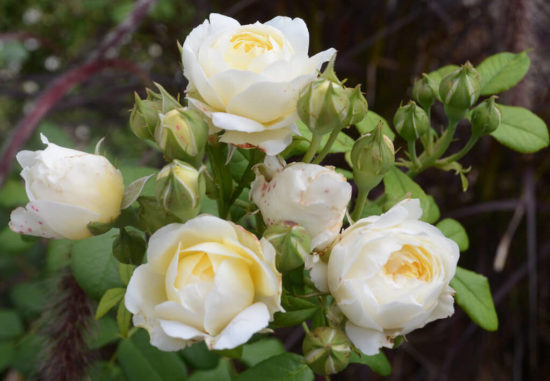
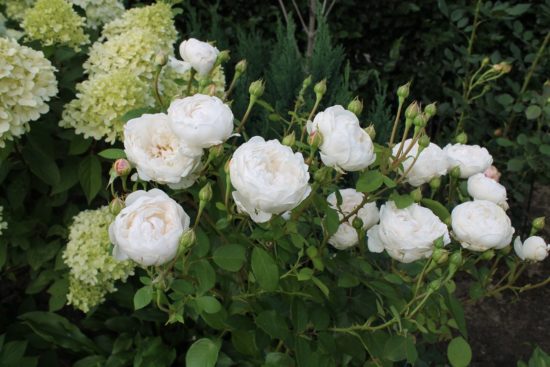

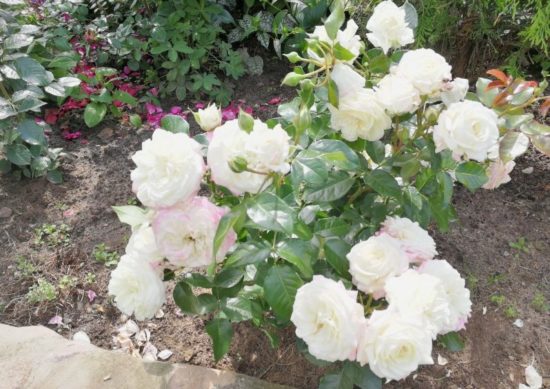
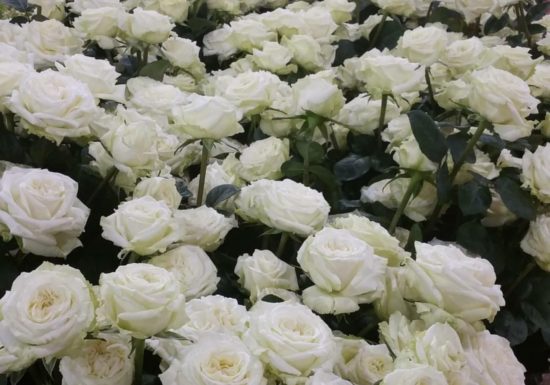
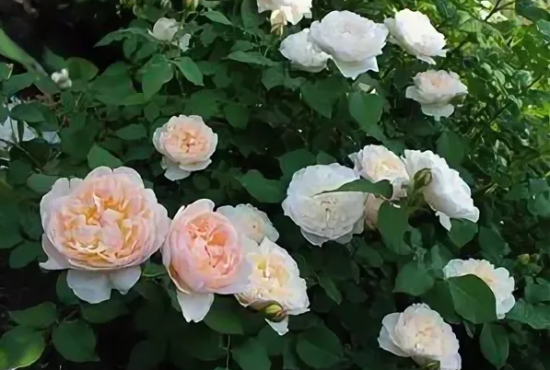
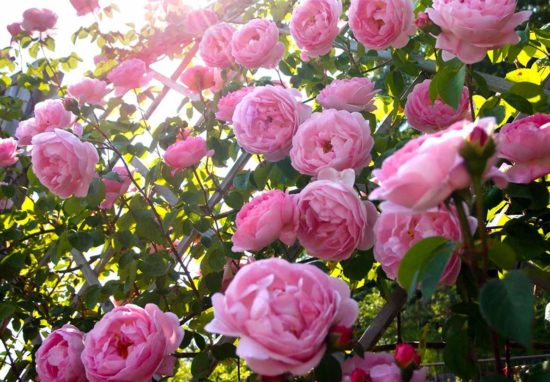
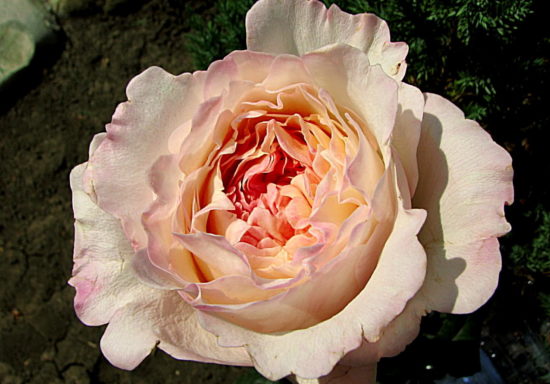
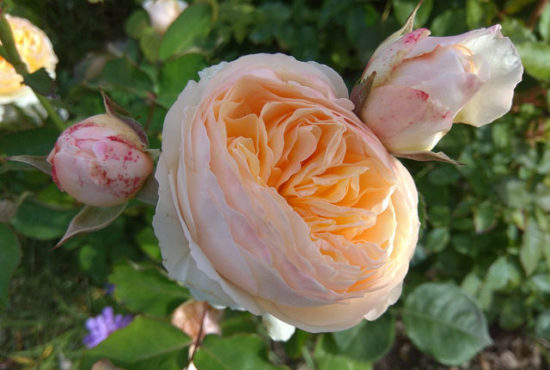
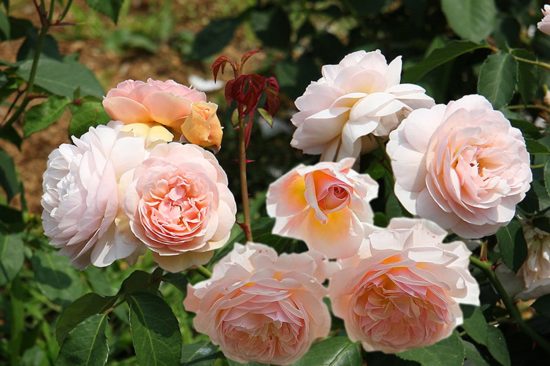
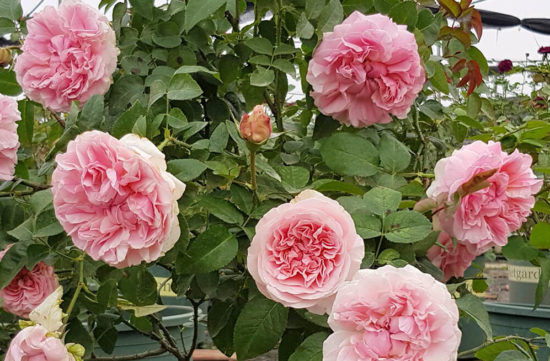
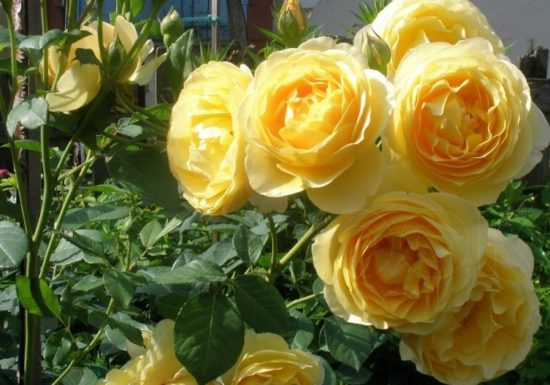

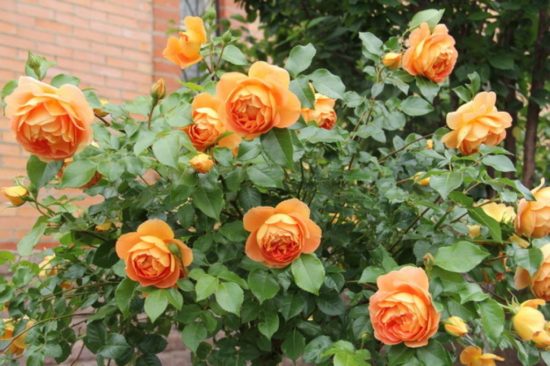
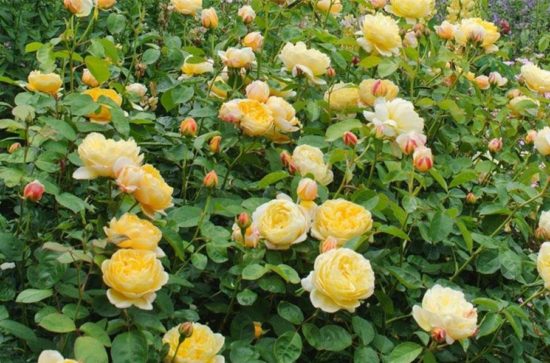
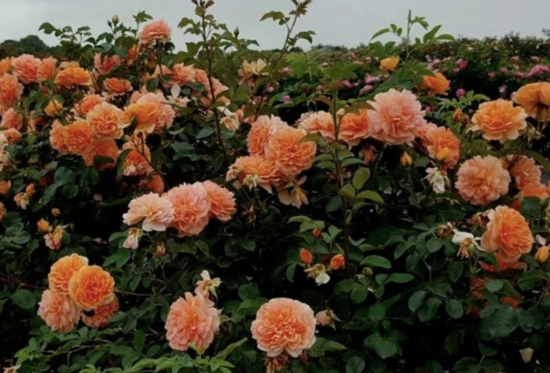
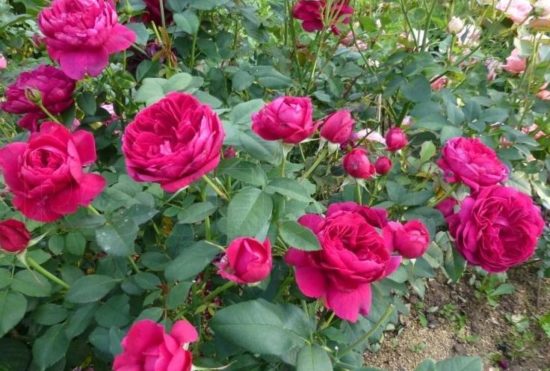
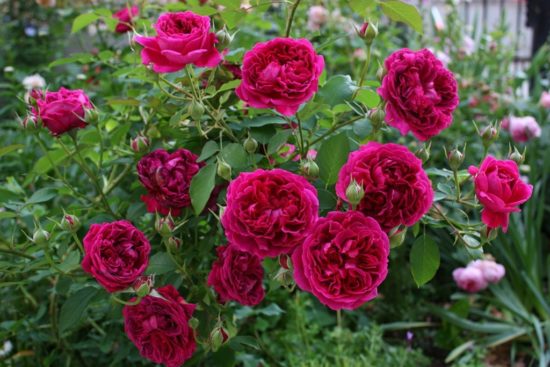
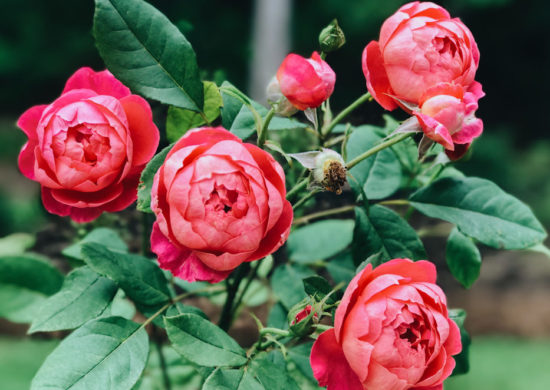
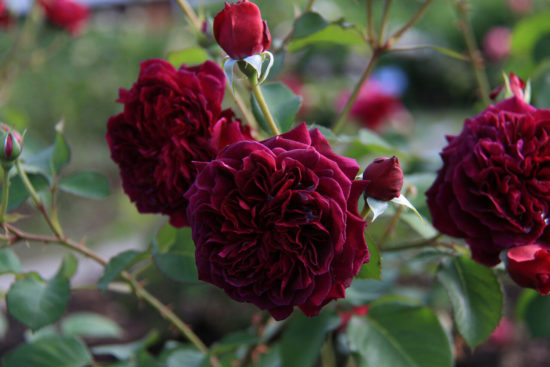
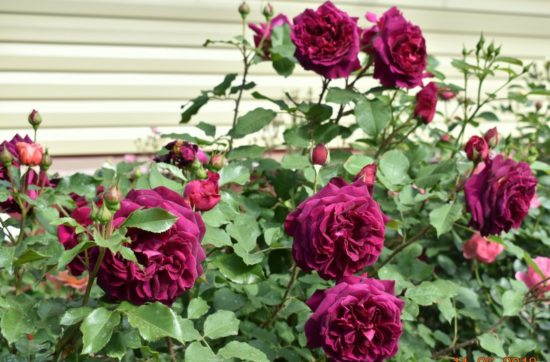

 (1 ratings, average: 4,00 out of 5)
(1 ratings, average: 4,00 out of 5) CUCUMBERS NEVER GET SICK, I'VE BEEN USING ONLY THIS FOR 40 YEARS! I SHARE A SECRET WITH YOU, CUCUMBERS ARE LIKE THE PICTURE!
CUCUMBERS NEVER GET SICK, I'VE BEEN USING ONLY THIS FOR 40 YEARS! I SHARE A SECRET WITH YOU, CUCUMBERS ARE LIKE THE PICTURE! You can dig a bucket of potatoes from each bush. Do you think these are fairy tales? Watch the video
You can dig a bucket of potatoes from each bush. Do you think these are fairy tales? Watch the video
 How our fellow gardeners work in Korea. There is a lot to learn and just fun to watch.
How our fellow gardeners work in Korea. There is a lot to learn and just fun to watch. Eye trainer. The author claims that with daily viewing, vision is restored. They don't charge money for views.
Eye trainer. The author claims that with daily viewing, vision is restored. They don't charge money for views. A 3-ingredient cake recipe in 30 minutes is better than Napoleon. Simple and very tasty.
A 3-ingredient cake recipe in 30 minutes is better than Napoleon. Simple and very tasty. Therapeutic exercises for cervical osteochondrosis. A complete set of exercises.
Therapeutic exercises for cervical osteochondrosis. A complete set of exercises. Which indoor plants match your zodiac sign?
Which indoor plants match your zodiac sign? What about them? Excursion to German dachas.
What about them? Excursion to German dachas.